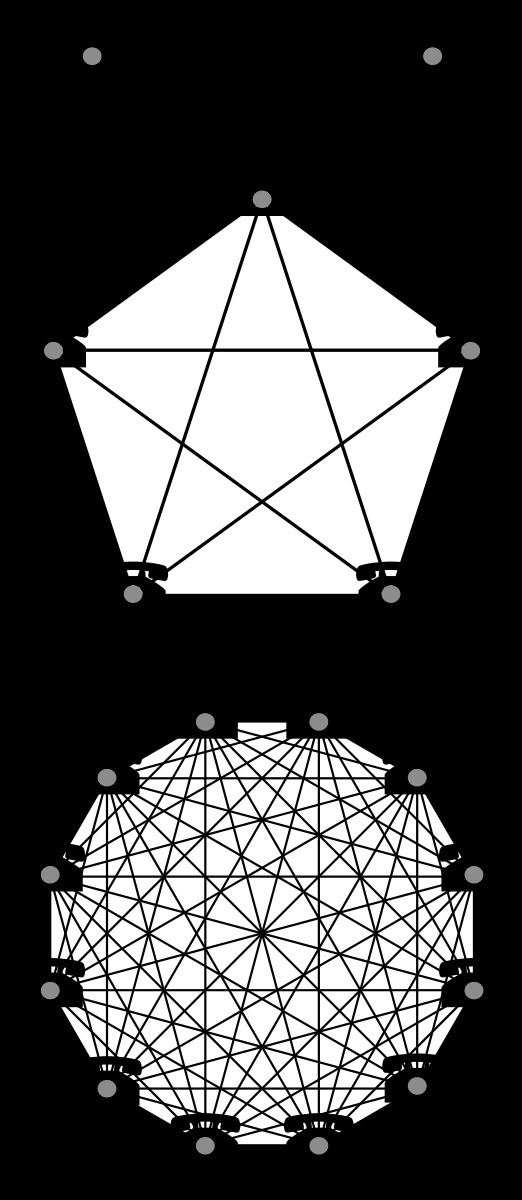 | ||
Metcalfe's law states that the value of a telecommunications network is proportional to the square of the number of connected users of the system (n2). First formulated in this form by George Gilder in 1993, and attributed to Robert Metcalfe in regard to Ethernet, Metcalfe's law was originally presented, c. 1980, not in terms of users, but rather of "compatible communicating devices" (for example, fax machines, telephones, etc.). Only later with the globalization of the Internet did this law carry over to users and networks as its original intent was to describe Ethernet purchases and connections. The law is also very much related to economics and business management, especially with competitive companies looking to merge with one another.
Contents
Network effects
Metcalfe's law characterizes many of the network effects of communication technologies and networks such as the Internet, social networking and the World Wide Web. Former Chairman of the U.S. Federal Communications Commission Reed Hundt said that this law gives the most understanding to the workings of the Internet. Metcalfe's Law is related to the fact that the number of unique connections in a network of a number of nodes (n) can be expressed mathematically as the triangular number n(n − 1)/2, which is proportional to n2 asymptotically (that is, an element of Θ(n2)).
The law has often been illustrated using the example of fax machines: a single fax machine is useless, but the value of every fax machine increases with the total number of fax machines in the network, because the total number of people with whom each user may send and receive documents increases. Likewise, in social networks, the greater number of users with the service, the more valuable the service becomes to the community.
Limitations
In addition to the difficulty of quantifying the "value" of a network, the mathematical justification for Metcalfe's law measures only the potential number of contacts, i.e., the technological side of a network. However the social utility of a network depends upon the number of nodes in contact. If there are language barriers or other reasons why large parts of a network are not in contact with other parts then the effect may be smaller.
Metcalfe’s law assumes that the value of each node n is of equal benefit. If this is not the case, for example because the one fax machines serves 50 workers, the second half of that, the third one third, and so on, then the relative value of an additional connection decreases. Likewise, in social networks, if users that join later use the network less than early adopters, then the benefit of each additional user may lessen, making the overall network less efficient if costs per users are fixed.
Modified models
Within the context of social networks, many, including Metcalfe himself, have proposed modified models using (n × log n) proportionality rather than n2 proportionality. Reed and Odlyzko have sought out possible relationships to Metcalfe's Law in terms of describing the relationship of a network and one can read about how those are related. Tongia and Wilson also examine the related question of the costs to those excluded.
Validation with actual data
Despite many arguments about Metcalfe' law, no real data based evidence for or against was available for more than 30 years. Only in July 2013, Dutch researchers managed to analyze European Internet usage patterns over a long enough time and found n2 proportionality for small values of n and (n × log n) proportionality for large values of n. A few months later, Metcalfe himself provided further proof, as he used Facebook's data over the past 10 years to show a good fit for Metcalfe's law (the model is n2 ).
In 2015, Zhang, Liu and Xu extend Metcalfe's results utilizing data from Tencent, China's largest social network company, and Facebook. Their work showed that Metcalfe's law held for both, despite the difference in audience between the two sites; Facebook serving a worldwide audience and Tencent serving only Chinese users. The Metcalfe's functions of the two sites given in the paper were
